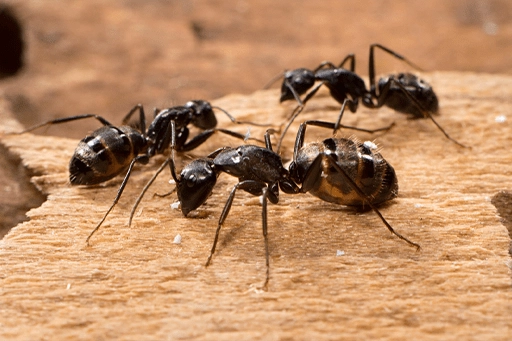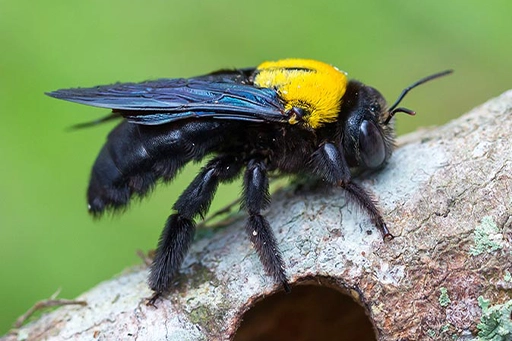Integrated Pest Management
Fungi / Dry Rot
Fungi / Dry Rot
TERMITES
TERMITES
Wood Boring Beetles
Wood Boring Beetles
CARPENTER ANTS
Though they do not eat wood like termites, Carpenter Ants (Camponotus modoc) carve areas in between wood members and insulation to nest and raise their young. Once adult, carpenter ants return to the outdoors to forage for food. As they are part of the ecosystem it is hard to keep Carpenter Ants at bay. To control them, keep all tree limbs and vines trimmed and clear of your home as they use them as highway access. Stack fire wood away from the structure or dispose of it if not used. Spackle a non-toxic repellent (such as Tanglefoot) on your power lines just before the connection to you house. If this does not suffice, call us for a localized treatment to eradicate and deter infestations.


CARPENTER BEES
They too do not eat wood like termites or wood boring beetles, but carve out a main tunnel with several side pockets to lay their eggs and seal the chambers with honey type filling that will feed the larvae and future bee. Carpenter Bees are pollinators so its best to deter them from infesting rather than kill them. Only the female has a dart and in spite of their loud and low monotone buzzing, they are not aggressive like wasps or other honey bees. They are not eusocial insects like honey bees but rather independent bees who like to nest nearby each other, which is way they are often see in small numbers. They prefer softer sappy wood but will also nest in hardwood. The best is to replace and relocate the infested wood member during winter time if possible, or plug the holes with an epoxy wood willer. Painting or staining the wood member is a good way of deterring the insects from re-infesting.
stay tuned with updates
[mc4wp_form id=”344″]
